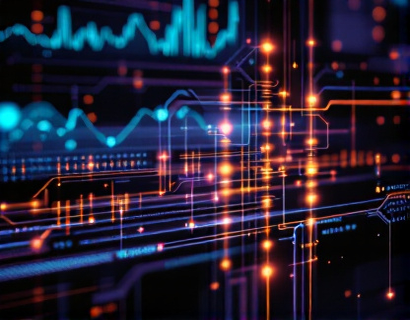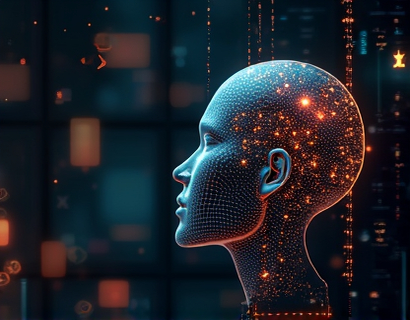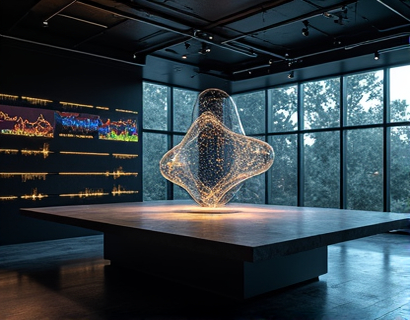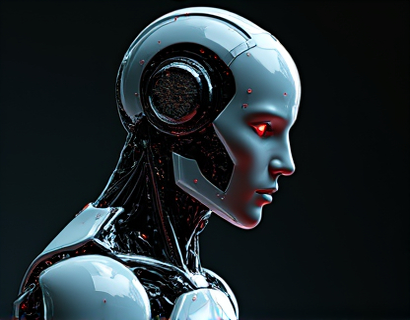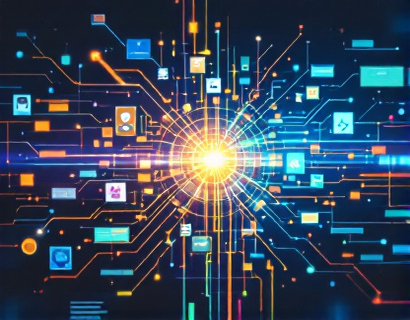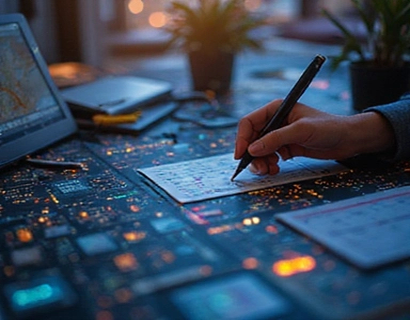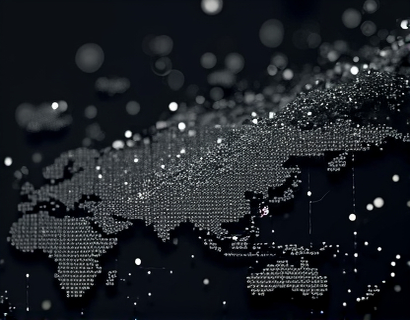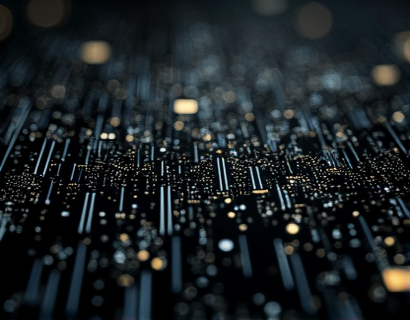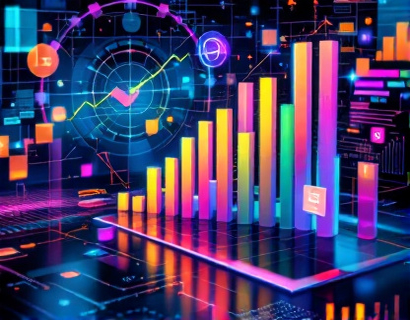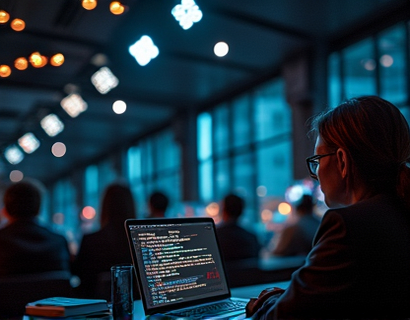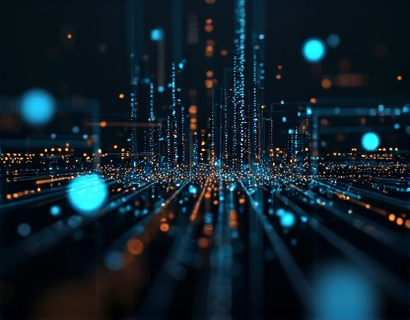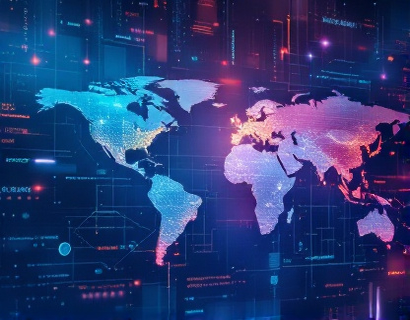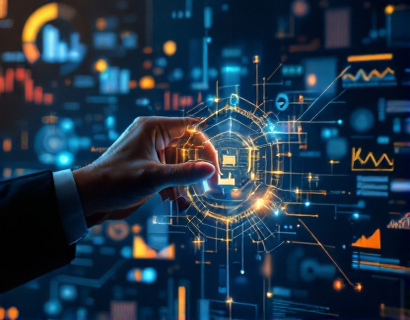Revolutionizing Productivity: The Synergy of Crypto and AI
The intersection of cryptocurrency and artificial intelligence (AI) is giving rise to a new era of digital solutions that promise to revolutionize productivity for tech innovators and digital pioneers. This convergence is not just a technological curiosity but a practical approach to enhancing efficiency, security, and innovation across various industries. As we delve into this topic, it's essential to understand the foundational technologies and their applications, as well as the broader implications for the future of work and digital interactions.
Understanding Cryptocurrency and AI
Cryptocurrency, at its core, is a digital or virtual currency that uses cryptography for security and operates on a decentralized network, typically a blockchain. This decentralized nature ensures transparency, immutability, and reduces the need for intermediaries, making transactions more secure and efficient. On the other hand, AI refers to the simulation of human intelligence processes by machines, particularly computer systems. These processes include learning (the acquisition of information and rules for using it), reasoning (using rules to reach approximate or definite conclusions), and self-correction.
The combination of these two technologies creates a powerful synergy. AI can enhance the functionality and security of blockchain-based systems, while blockchain can provide a robust and transparent framework for AI applications, ensuring data integrity and trust. This synergy is particularly beneficial for tech innovators who are always on the lookout for ways to streamline processes and gain a competitive edge.
Enhancing Security with AI and Crypto
One of the most significant benefits of combining AI and cryptocurrency is the enhancement of security measures. AI algorithms can detect and respond to anomalies in real-time, which is crucial for preventing fraud and cyber-attacks on blockchain networks. For instance, machine learning models can analyze transaction patterns to identify suspicious activities, thereby strengthening the security of crypto assets. This is particularly important as the value of cryptocurrencies continues to rise, making them a prime target for malicious actors.
Moreover, AI can improve the security of smart contracts, which are self-executing contracts with the terms directly written into code. AI can help in auditing smart contracts for vulnerabilities, ensuring that they function as intended and reducing the risk of exploits. This integration not only protects user assets but also builds trust in blockchain-based platforms, encouraging more widespread adoption.
Optimizing Processes with AI-Driven Blockchain Solutions
The efficiency gains from combining AI and blockchain are substantial. AI can optimize various aspects of blockchain operations, from transaction processing to network management. For example, AI algorithms can predict network congestion and dynamically adjust resource allocation to maintain optimal performance. This ensures that transactions are processed quickly and efficiently, even during peak usage times.
In supply chain management, the combination of AI and blockchain can provide end-to-end visibility and traceability. AI can analyze data from multiple sources to predict demand, optimize inventory levels, and streamline logistics. Blockchain ensures that all transactions are recorded transparently and immutably, reducing the risk of errors and fraud. This synergy can significantly reduce costs and improve the overall efficiency of supply chain operations.
Automating Tasks with Smart Contracts and AI
Smart contracts, when combined with AI, can automate a wide range of tasks, from simple transactions to complex business processes. AI can enhance smart contracts by adding intelligent decision-making capabilities. For instance, AI can be used to create adaptive smart contracts that adjust their behavior based on real-time data and conditions. This flexibility makes smart contracts more versatile and applicable to a broader range of use cases.
In the realm of finance, AI-driven smart contracts can automate trading strategies, execute trades based on predefined conditions, and manage risk more effectively. In the legal domain, smart contracts can be used to automate contract enforcement and dispute resolution, reducing the need for intermediaries and lowering transaction costs. The integration of AI ensures that these processes are not only automated but also optimized for efficiency and accuracy.
Personalized User Experiences through AI and Crypto
The convergence of AI and cryptocurrency can also lead to more personalized user experiences. AI can analyze user data to provide tailored recommendations and services, enhancing user engagement and satisfaction. In the context of cryptocurrency, AI can help in managing digital wallets, suggesting optimal investment strategies, and providing real-time market insights. This level of personalization is particularly valuable for tech innovators who require sophisticated tools to manage their digital assets and stay ahead in a competitive landscape.
Furthermore, the use of blockchain and AI can ensure that user data is handled securely and transparently. Users can have greater control over their data, knowing that it is stored on a decentralized network and protected by advanced cryptographic techniques. This not only enhances privacy but also builds trust in the platforms and services offered.
Case Studies and Real-World Applications
Several projects and platforms are already leveraging the synergy of AI and cryptocurrency to drive innovation and productivity. One notable example is Decentralized Autonomous Organizations (DAOs), which use blockchain and AI to manage and govern projects in a transparent and democratic manner. AI can analyze community feedback and voting patterns to make data-driven decisions, ensuring that the DAO operates efficiently and aligns with the interests of its members.
Another example is the use of AI in decentralized finance (DeFi) platforms. AI-driven algorithms can optimize lending and borrowing processes, provide risk assessment, and manage liquidity pools more effectively. This not only improves the user experience but also increases the accessibility and efficiency of financial services in the crypto ecosystem.
In the field of Internet of Things (IoT), the combination of AI and blockchain can create secure and autonomous networks. AI can process and analyze data from IoT devices in real-time, while blockchain ensures that the data is tamper-proof and securely transmitted. This synergy is particularly useful in industries like manufacturing, healthcare, and smart cities, where reliable and secure data transmission is critical.
Challenges and Future Prospects
Despite the numerous benefits, the integration of AI and cryptocurrency also faces several challenges. One of the primary concerns is the regulatory landscape. As both technologies are still evolving, regulatory frameworks are often unclear or inconsistent, which can hinder widespread adoption. Additionally, the technical complexity of these systems can be a barrier for some users and businesses, requiring more user-friendly and accessible solutions.
Looking ahead, the future of AI and cryptocurrency is promising. As technology advances, we can expect more sophisticated AI algorithms that can better leverage the unique properties of blockchain. The development of more scalable and efficient blockchain platforms will also play a crucial role in supporting the growth of AI-driven applications. Furthermore, increased collaboration between tech companies, researchers, and regulators will be essential in creating a conducive environment for innovation.
The potential for AI and cryptocurrency to transform productivity and innovation is immense. By combining the security, transparency, and efficiency of blockchain with the intelligence and adaptability of AI, we can create a new generation of digital solutions that empower tech innovators and digital pioneers. As the ecosystem continues to evolve, the possibilities for enhancing productivity and driving technological advancement are limitless.



